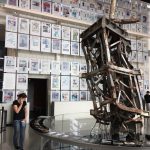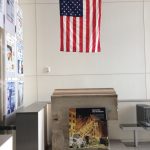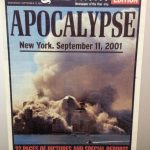16 years ago this Monday, the twin towers of the World Trade Center collapsed after terrorists hijacked and crashed airplanes into them. That day, 2,977 people lost their lives.
One of the victims was Bill Biggart, a journalist for the Associated Press who was capturing the event on camera. He was taking photos up until the minute he died. The time stamp for his last shot coincides with the collapse of the first tower.
The Newseum at 555 Pennsylvania Ave in Washington, DC, has an exhibit commemorating the day. The front pages of major newspapers from across the country and around the world cover the window-facing wall of the exhibit. The Daily Mail bears the headline, “Apocalypse;” the Clarín, “La Guerra.” The Orlando Sentinel reads, “Day of Terror.”
My classmates and I visited the Newseum to gather facts and interview people about the exhibit. I wondered how I would interview people older than me while respecting their memories of that day. I can’t even remember the day, though my former classmates recall how school ended early and how our teachers sent us home.
Passing through the exhibit, I found quickly solved that issue. A montage of the days events, cut from footage gathered by reporters, brought the emotional and human toll back to its viewers. After the video, I interviewed an older couple from New York who had watched it with me. The interview was quiet. The couple mostly talked, and I listened. Watching the video made me more understanding when I would ask questions.
Not all interviews will be like this, but this assignment from Prof. Krasnow reinforced the human side of journalism for me: the field is ultimately about people and telling their stories. If you can’t respect that, you should find another profession.





